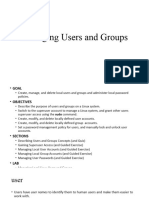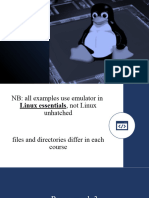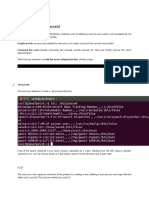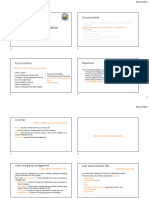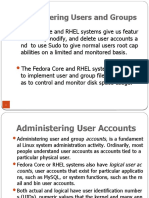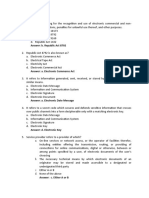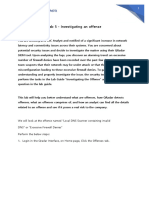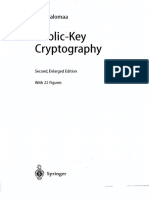0% found this document useful (0 votes)
176 views16 pagesCh15 System and User Security
The document discusses various types of user accounts on a Linux system. It describes system accounts for services, regular user accounts, and the root administrative account. It covers commands to view user and group information like id, who, w, and last. Files like /etc/passwd, /etc/shadow, and /etc/group store user account details and group membership. The su and sudo commands can be used to switch users and execute commands as another user.
Uploaded by
Zahrul RomadhonCopyright
© © All Rights Reserved
We take content rights seriously. If you suspect this is your content, claim it here.
Available Formats
Download as PDF, TXT or read online on Scribd
0% found this document useful (0 votes)
176 views16 pagesCh15 System and User Security
The document discusses various types of user accounts on a Linux system. It describes system accounts for services, regular user accounts, and the root administrative account. It covers commands to view user and group information like id, who, w, and last. Files like /etc/passwd, /etc/shadow, and /etc/group store user account details and group membership. The su and sudo commands can be used to switch users and execute commands as another user.
Uploaded by
Zahrul RomadhonCopyright
© © All Rights Reserved
We take content rights seriously. If you suspect this is your content, claim it here.
Available Formats
Download as PDF, TXT or read online on Scribd
/ 16






